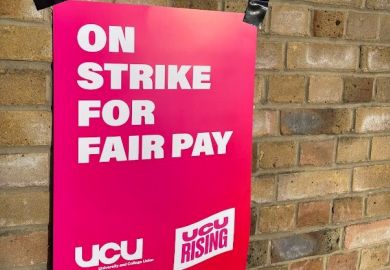Figures for 2012-13 show that the overall full-time salary increase of 1.7 per cent is on a par with increases in prices for the first time in four years. However, according to the American Association of University Professors, which published the data, this is primarily because the US rate of inflation is currently so low.
Full-time faculty members who remained at the same institution as last year fared better, receiving average salary increases of 3.2 per cent, however this is still below the average increase over the last ten years (3.7 per cent). Overall salary increases for faculty members at public colleges and universities continued to lag behind those at private institutions, the data show.
“The news this year is not all gloomy, but the silver lining is not exactly gleaming either,” said John Curtis, lead author of the report.
According to the data, which are based on salary and benefits for full-time faculty members at more than 1,100 colleges and universities, more than three quarters of instructional staff positions (76 percent) are currently filled on a “contingent basis”, meaning they are not tenured or “tenure track” positions. The largest of these contingent groups is “part time”, which makes up more than 40 per cent of faculty members.
Part-time faculty members rarely have access to benefits from their academic employers and have little or no job security, the AAUP said, while non-tenure track faculty members often have only limited-term appointments that do not constitute a career path.
“The lack of support they receive from their institutions translates into a lower-quality educational experience for students: even the most dedicated and well-qualified faculty members find it difficult to challenge their students to exceed when they themselves are scrambling to piece together a living,” the report says.
The report includes an analysis of state-level changes in higher education spending between 2008 and 2013, with the figures across all 50 states showing an 18 per cent decline.
Saranna Thornton, professor of business and economics at Hampden-Sydney College and co-author of the report, said that “as states have abdicated their responsibility for ensuring access to postsecondary education, students and their families have been forced to bear more of the costs in the form of higher tuition prices”.
The continuing salary disadvantage for faculty members working in the public sector is also highlighted in the report, which showed they earn up to 35 per cent less than their colleagues in comparable positions at private institutions. This difference accumulates over the course of an academic career, and “makes it increasingly difficult for public institutions to hire and retain the best faculty members”, the AAUP said.
Times Higher Education published its analysis of UK vice-chancellor and academic staff pay last month. Click here to access the results.
Register to continue
Why register?
- Registration is free and only takes a moment
- Once registered, you can read 3 articles a month
- Sign up for our newsletter
Subscribe
Or subscribe for unlimited access to:
- Unlimited access to news, views, insights & reviews
- Digital editions
- Digital access to THE’s university and college rankings analysis
Already registered or a current subscriber? Login




